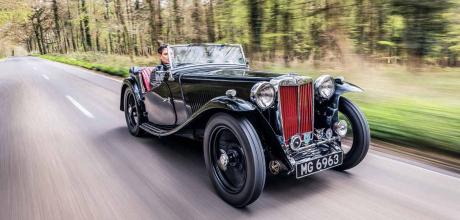1946 MG TC
Purely by chance, one man became obsessed with record-breaker Goldie Gardner. Then his MG TC came up for sale...
Words James Elliott
Photography Jonathan Fleetwood
GOLDIE OPPORTUNITY
Thankfully, the historical romance and significance of the MG T-series is not what the business types call a ‘barrier to entry’. Despite all those GIs falling in love with them, their role in kick-starting racing in the US postwar, Steve McQueen and Denise McCluggage parking theirs nose-to-nose overnight in California when they were doing the naughties, starring roles in countless films and being a highly usable car for its era — yes, despite all that, you can still have one for tuppence.
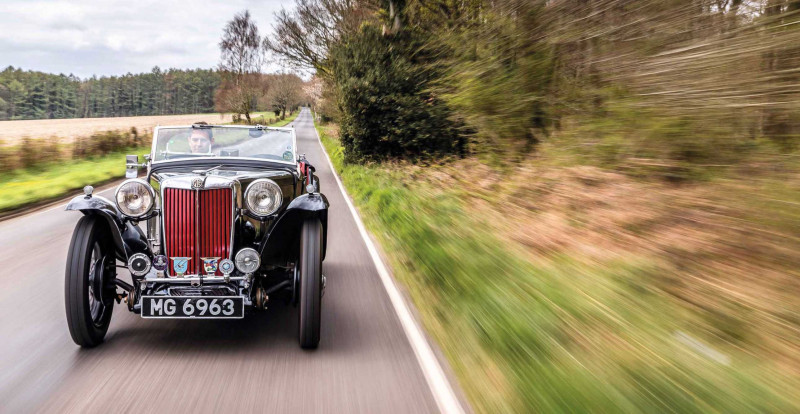
In some ways it’s a deceptively sophisticated little thing, too, though maybe not in the way the French might judge sophistication with their cutting-edge rolling laboratories, or the Italians as they kicked pre-war styling tropes into the long grass and went full-on for sharp suits and curves. In terms of a small sports car, accessible to a good portion of the population, and which had enough tech to make it Fisher-Price easy to drive, in the immediate post-war years the MG TC was hard to beat.
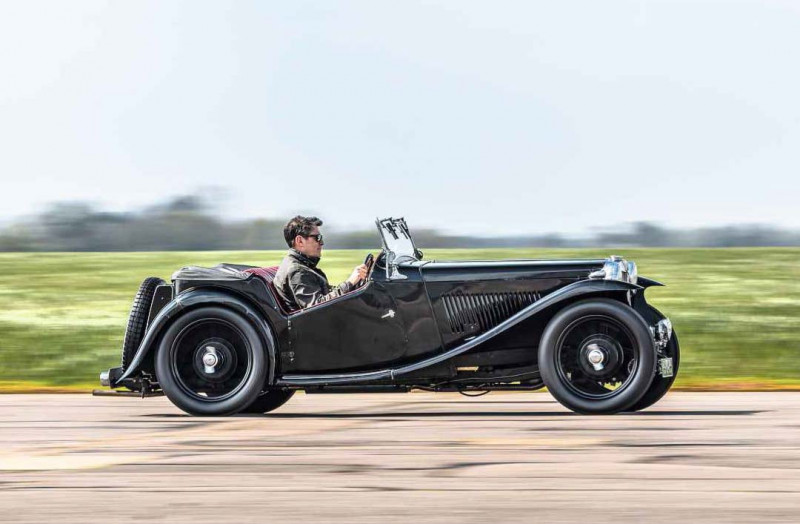
Plus, perhaps above all, it embodied what MG did best until it was killed off — offer huge Labrador-like fun without enough power to scare the average driver or get them in trouble. All the sensations of sporting motoring with little of the risk. The A and B continued that trend; perhaps that explains why they also remain so undervalued.
The TA (a retrospective title applied only after the TB was introduced) came first, steelbodied and ash-framed and morphing out of the PB in 1936 but with wider track, 9in drums, synchro on the top two gears and a 1292cc OHV MG JG engine fed by twin SUs. At the same price as its predecessor (£222), 3000 were sold before the 1250cc XPAG-powered TB came on stream in 1939. Only a few hundred of those were made before the factory turned its attention to munitions.

Unsurprisingly, MG’s first post-war offering was a lightly modified version of its last pre-war car. As well as a 54bhp tuned version of the XPAG, the main upgrades were 19in Dunlop wires, uprated electrics, a slightly wider body, and friction dampers and conventional springs in place of a sliding trunnion set-up. Thanks in no small part to exports (though it was only ever right-hand-drive), the TC was a hit, with 10,000 sold — despite it costing more than double what a TA had a decade earlier — until it was in turn replaced by the TD in 1949.
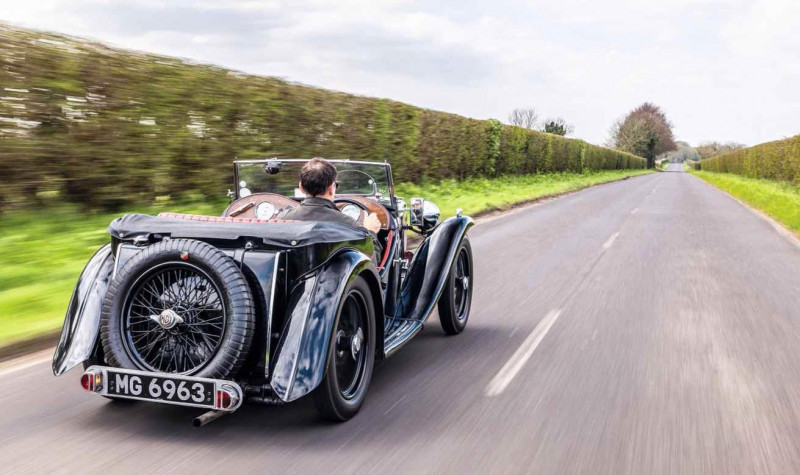
Out of that production, this example is one of the more historically interesting. It is certainly the most serendipitous.
The current owner is John Mayhead, former Coldstream Guardsman, current statistical guru at Hagerty and lifelong old car obsessive. Having left the armed services he embarked on a career in classic car journalism. Being a good and practised freelance he already knew that everywhere you go and everything you do must somehow be converted into income. So when he and his wife were invited to a wedding in Holland, he started casting around for opportunities to earn a few quid en route to offset the cost. On noticing that the famous Belgian dual carriageway at Jabbeke (Britons’ go-to record-breaking road post-war) was not far from the wedding venue, he picked that as his story, not only to recap its history but also to pinpoint beyond doubt the precise stretch of road that had been used.
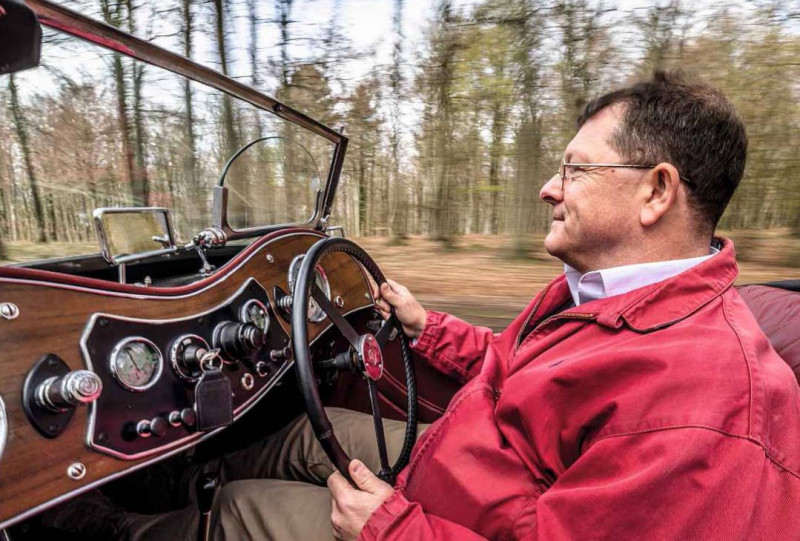
He explains: ‘I went there, identified and found the correct bit of motorway — so many people have got it wrong — and wrote my story all about the great British feats achieved there by Norman Dewis, Stirling Moss, Sheila van Damm et al. But out of all these names this bloke Goldie Gardner kept cropping up: 6ft 2in tall, walked with a stick, ex-war hero and it turned out that he had actually found Jabbeke first. As a result, I wanted to know a lot more about him, but couldn’t find out much at all.’
At that point he shelved the book he was writing about his war experiences in Iraq — a book he felt he desperately needed to write but equally desperately didn’t want anyone to read — and instead focused on Goldie Gardner. ‘It made sense, I still wanted to write a book, there was the military connection, I couldn’t find anything significant on him since his 1951 autobiography Magic MPH, oh and my primary investigations had revealed that the National Motor Museum had 35 boxes of his stuff. That seemed a good place to start.
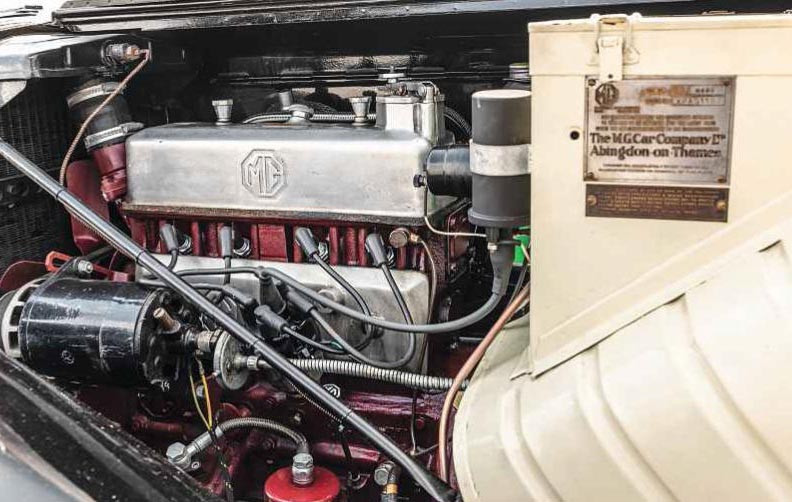
‘The more I found out, the more fascinating it became because on the surface it is this Boys Own story of a stoic and brave guy who was a war hero and racing driver but, when you dig into it, it is much more compelling.’
The briefest summary, so as not to stymie any chances Mayhead has of you buying his new book (see following feature), is that Lieutenant-Colonel Alfred Thomas Goldie Gardner OBE MC was born in 1890 and known as Goldie after his mother’s maiden name. He walked with a cane after crashing his plane at Brooklands in 1917 (about which Mayhead has unearthed quite a revelation) and aggravated the injury in a smash during the 1932 RAC Tourist Trophy race at Ards.

Having witnessed Sir Malcolm Campbell’s speed record at Daytona Beach in 1935, Gardner decided that was his calling and set a raft of new, 200mph-plus benchmarks in the 750-1100 and 1100-1500cc classes pre-war. After World War Two, during which he was part of Montgomery’s HQ_on the beaches on D-Day, and was part of the Coats Mission (the plan to extract the Royal Family if the Germans invaded — basically, a series of cars piloted by top racing drivers ready to scatter them to the winds), he would rack up another 100 records, including his famous triumphs at Bonneville in MG EX135.
It was there that he clipped a marker post, which led to the injury that caused a careerending haemorrhage in 1952 and which ultimately led to the death of the Segrave Trophy and three-time BRDC Gold Star winner six years later.
Of course, when he started work on his book Mayhead had set alerts for Goldie Gardner and in May 2021 one of them pinged. Silverstone Auctions was about to sell a 1946 ex-Goldie Gardner MG TC, assumed to be a gift from the works, estimate £23,000-28,000. For a Goldie Gardner fan it didn’t read that well — glassfibre wings, 16in wheels, Spax dampers — and it didn’t even seem to have played that big a role in Gardner’s life, though it did come with a full, original toolkit. Lacking anywhere to keep it, Mayhead reluctantly decided not to bid but, when the car didn’t sell, he had non-buyer’s remorse and popped in a post-sale offer.
‘I wouldn’t say I was ambivalent but, of the 55 cars I’ve owned, all have been much younger and at least half have been Alfa Romeos. Plus the Goldie Gardner connection was nice, though seemed pretty tenuous on the surface, like it was something he just kept a couple of years then sold on.’ Then the fates kicked in.
‘When I took the call back from Silverstone Auctions, I was down in the Beaulieu archive with research and enquiries officer Patrick Collins, going through some boxes of Goldie’s stuff, sitting there with a big photo album on my lap. Literally as I was taking the call that my offer had been accepted, I turned a page and there was a picture of Goldie with MG 6963, in Belgium next to EX135.1 kept turning the pages and there were more and more photos of my new car; it was spooky.
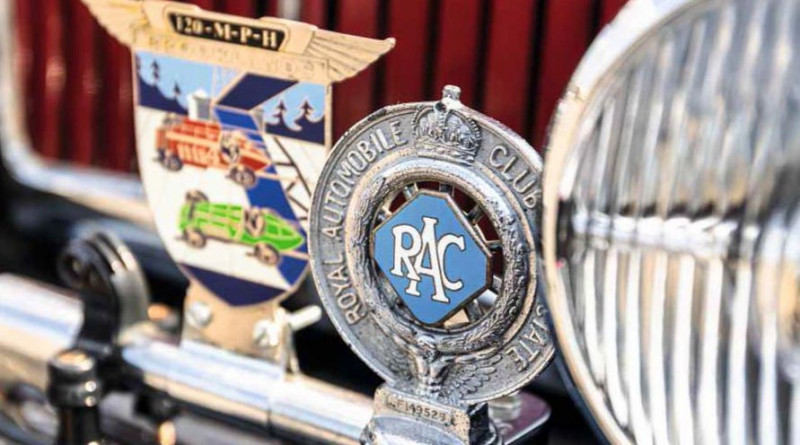
‘Far from being a bauble from MG, for the whole 1946 season he drove it to Jabekke and Brescia for speed runs and I have photos of him recceing and testing the routes in it. It was always his road car.’
Since acquiring it, Mayhead has returned it to friction dampers (though Hartford rather than the unobtanium Luvax, done by Jim Stokes Classics) and 19in wheels (instead of the more competition-friendly 16in wheels previous owners had) but changed little else, not least because MG man George Edney was a former owner, meaning it was thoroughly gone through by his son Peter, the XPAG guru.
Mayhead is also keen not to wipe out its post-Gardner history and you can still see the scars from Ken Cheeseman’s big off at Silverstone in 1969 and the cream scuttle paint that should really be grey (but, as it’s one of the first 250 cars, who knows what colour it came out of Abingdon?). He’s replaced the later headlamp lenses and spotlight with correct items and he’s also meticulously recreating Gardner’s badge bar, though the badge for Goldie’s 124.4mph Brooklands outer circuit record (1000-1250cc) is a one-off casting and sold for £4500 a decade ago, so securing that original looks unlikely.
But mainly, having had Blue Diamond check it over and give it a clean bill of health, he is using it. As well as doing the Tour Prive (the prelude to Salon Prive) he has skirted around the UK and achieved a ‘terrifying’ 72mph down the Lavant Straight at Goodwood.
My drive on West Sussex single-lane A-roads is rather more sedate, but isn’t without its own ‘thrills’. There, even with 40-50mph the limit of your ambitions, oncoming freight looms very large, threatens to draught you and never allows the thought of where one misplaced bump might pitch you to stray far from your mind.
That said, considering its ‘budget’ status when new, the MG TC compares favourably with many cars from its era. It is a very usable and beautifully proportioned car, genuinely feeling like a scaled-down (in every way) version of one of the grand Italian racing cars of the 1930s. That extra body width over the TB (it’s the same overall; the running boards were trimmed to accommodate it) may be small on paper, but it allows two broadish chaps to barrel along in comfort, never feeling cramped.
You need a bigger gap in the traffic than you might think to pull onto a busy roundabout, but otherwise that willing little engine starts on the button, is smooth and purposeful, and peppy enough to take the MG to 60mph in a little over 22sec. I am perfectly happy with what this nicely set-up XPAG offers but, yes, you can see why people supercharge them. It likes changing up at 4000rpm though you can push it to 5200rpm.
The driving position is excellent, with a huge wheel that you slide under and which goes right down onto your legs. At first it feels like it will have 200 turns lock-to-lock and it’s going to be horribly vague, but you soon get used to the fact that in most circumstances you really need only to use a little bit either side of centre.
The TC’s most era-defying feature is its gearbox. If that is what in most cases makes driving old cars difficult or off-putting for some people, then this could be their conversion therapy. The lever is a decent haul away from the driver, though with a short throw and a smooth action, plus synchro on second, third and fourth, it really is sweet and simple. You need to time the gears about right, but there’s no need to double-declutch.
In fact, all that betrays the MG’s age is the brakes: even well-sorted, as they are on this car, they are not for the faint-hearted. Despite that, it’s just really engaging and lovely to drive on tall, narrow tyres, and surprisingly usable in the modern world for an immediately-post-war car.
That this one belonged to (and was properly used by) one of Britain’s unsung motoring heroes just makes it the more special. And makes me all the more pleased that, 75 years after Gardner parted with it, it has clearly found the right owner. He says: ‘If I could change anything it would be the perception of these as flat-cap-wearing old people’s cars. I am the last person I thought would be won over by an MG TC, but I enjoy driving it than more than any of my other cars. That analogue driving experience is phenomenal; even the chronometric speedo and the way it ticks, always reminding you of the engineering precision that went into it.
‘The other thing that I love about it is that my young boys — they’re seven, nine and 11- can come and get involved and help with it, and it’s tiny so there’s space around it in the garage as well as around the engine.’
Goldie would be proud.
IF THE GEARBOX IS WHAT PUTS SOME PEOPLE OFF OLD CARS, THIS COULD BETHEIR CONVERSION THERAPY’
Clockwise, from top left Engine is more willing than pokey; Mayhead is trying to recreate the badge bar exactly as Gardner had it, a challenge considering that one of Goldie's badges was a one-off; MG is like a scaled-down version of far more exotic fare; Elliott is impressed by how easy the TC is to drive for a car from its era.

Below, left to right — With 35 boxes of Goldie Gardner's personal effects kept at the National Motor Museum in Beaulieu, Mayhead was able to discover and collate this MG's impressive background role in record-breaking history. Here are just a few shots of it during Goldie's ownership: lurking behind EX135 in Belgium in 1946; chasing it on the Autostrada that same year; with the record crew for a team-shot in Italy; providing foreground interest for a proud Goldie; conducting a test run on the new road at Jabbeke.
TECHNICAL DATA 1946 MG TC
- Engine 1250cc OHV four-cylinder, twin SU carburettors
- Max Power 54bhp @ 5200rpm
- Max Torque 64lb ft @ 2700rpm
- Transmission Four-speed manual, rear-wheel drive
- Steering Worm and roller
- Suspension Front and rear: beam axles (live rear), semi-elliptic leaf springs, friction dampers
- Brakes All Drums
- Weight 787kg
- Top speed 78mph (claimed)
- Acceleration 0-60mph 22.7sec


